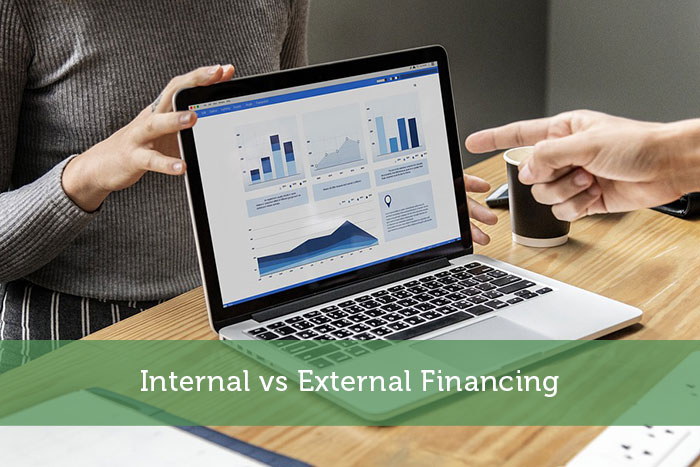You need to increase your capital by getting more of your goods to your consumers, but this of course is going to cost you more. This is where decisions get tough and we get that. When a call to an action requires money, there are two ways to generate more revenue, but with every new plan comes a list of pros and cons.
1. Internal
Internal funds, unlike external funds, come from the assets within a company, but still serve the same purpose as external—to assist businesses in increasing capital growth—the funds will come from the business’s profits and savings.
Advantages and Disadvantages of Internal Financing
Every business plan comes barring advantages and disadvantages, and we’ve listed some of them below to help you narrow your search down to what may be a better fit.
Advantages
Being Able to Make Your Own Decisions
Unlike external financing, internal allows you to make your own decisions because you’re not expected to share a portion of ownership. As a business, you’d be using your own resources.
Cost
The cost of internal financing will always be low because there are no fees, and you’re also not investing in loan funding, which means some of the biggest costs could be those involving interest.
Disadvantage
Not Being Able to Reach As Far
In order for a company to increase growth, it must be aware of its resources to ensure it has enough of them. yes, having control over your own assets is a luxury, but because you’d be using your own, this could be a gateway to increased, internal debt.
Interest
This goes back to using your own resources within internal funding, as well as the biggest cost being interest. The higher the interest, the bigger the possibility for debt.
2. External
External financing is a type of business funding acquired through loans, investments from firms, and individual entities. Small business owners use these resources when they need to boost their business’s growth, essentially, most smaller businesses need enough capital to get to a more successful state. It’s important to understand that financing for small businesses has only two categories:
Debt
—Borrowing a secure quantity from a lender, which is paid back with interest.
—Debt financing comes in different ways:
- Credit lines (secured).
- Credit Cards
- Invoice
- Receivable
- MCA (Merchant Cash Advances). Equity
Equity
—A company sells a portion of its shares to an investor in exchange for cash.
—Equity financing comes in different ways:
- Venture capital firms
- Angel Investors
- Small Investor
- Family
- Friends
Advantages and Disadvantages of External Financing
We know when it comes to business capital, like internal financing, pros and cons will come externally, too. The short list below will allow you to make a sound decision in getting the resources you need.
Advantages
Growth in Your Business
One of the key ingredients to a successful business, no matter at what stage, is growth. External financing allows them to use external funding, especially if it’s difficult for the business to be funded on its own.
Putting The Pro in Advantage
Putting the pro in advantage means, with external financing, the information being received from experts is unlimited. There are so many resources available to business owners who need assistance.
Disadvantages
Dealing With Investors and Shareholders
When receiving resources externally, there’s always going to be some type of exchange. In this case, shareholders and investors are going to expect a portion of ownership in your company, which means all rules may not be made only by you. It’s similar to sharing a dinner plate. Initially, it’s going to take some negotiating within the decision to share.




